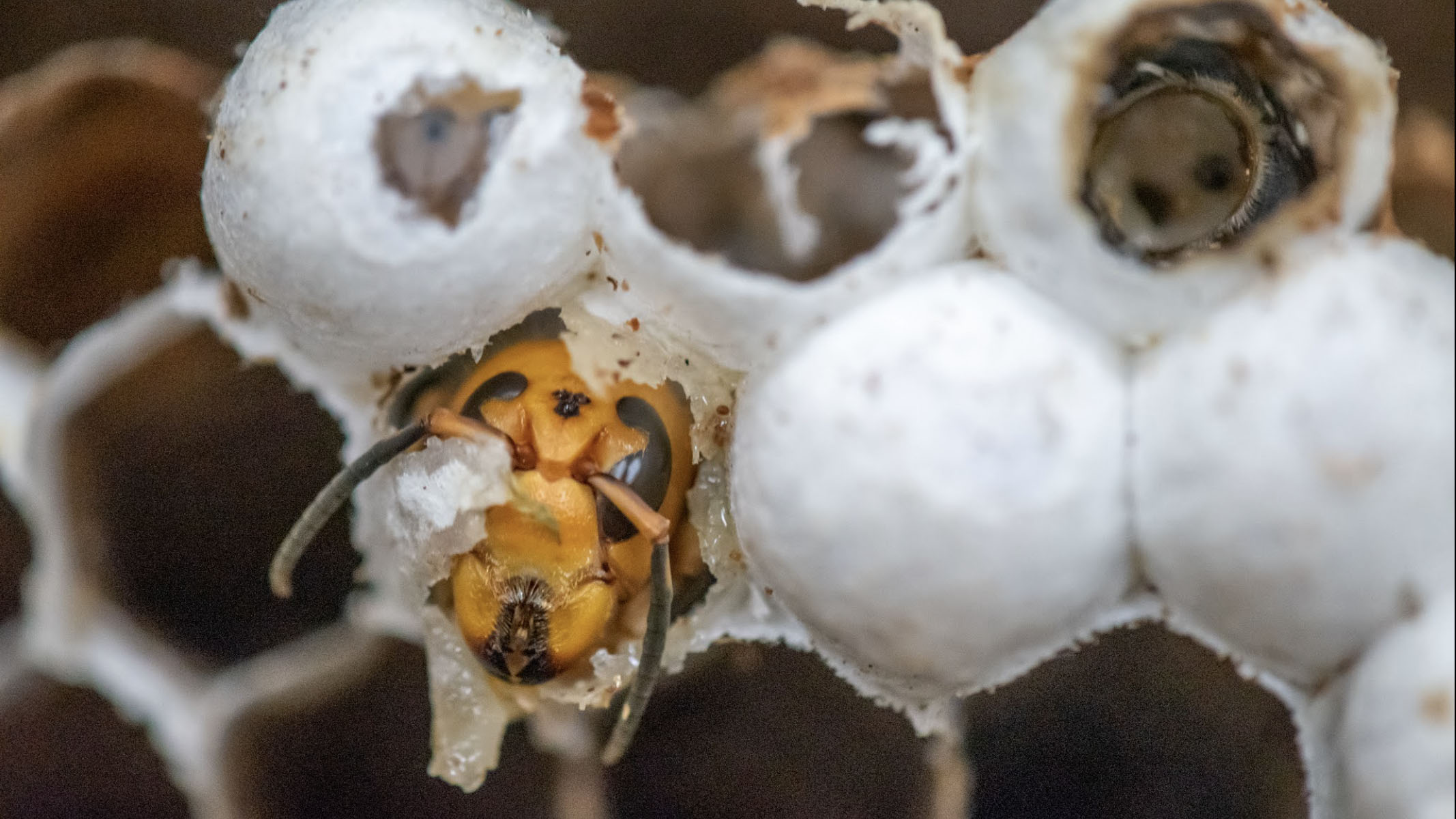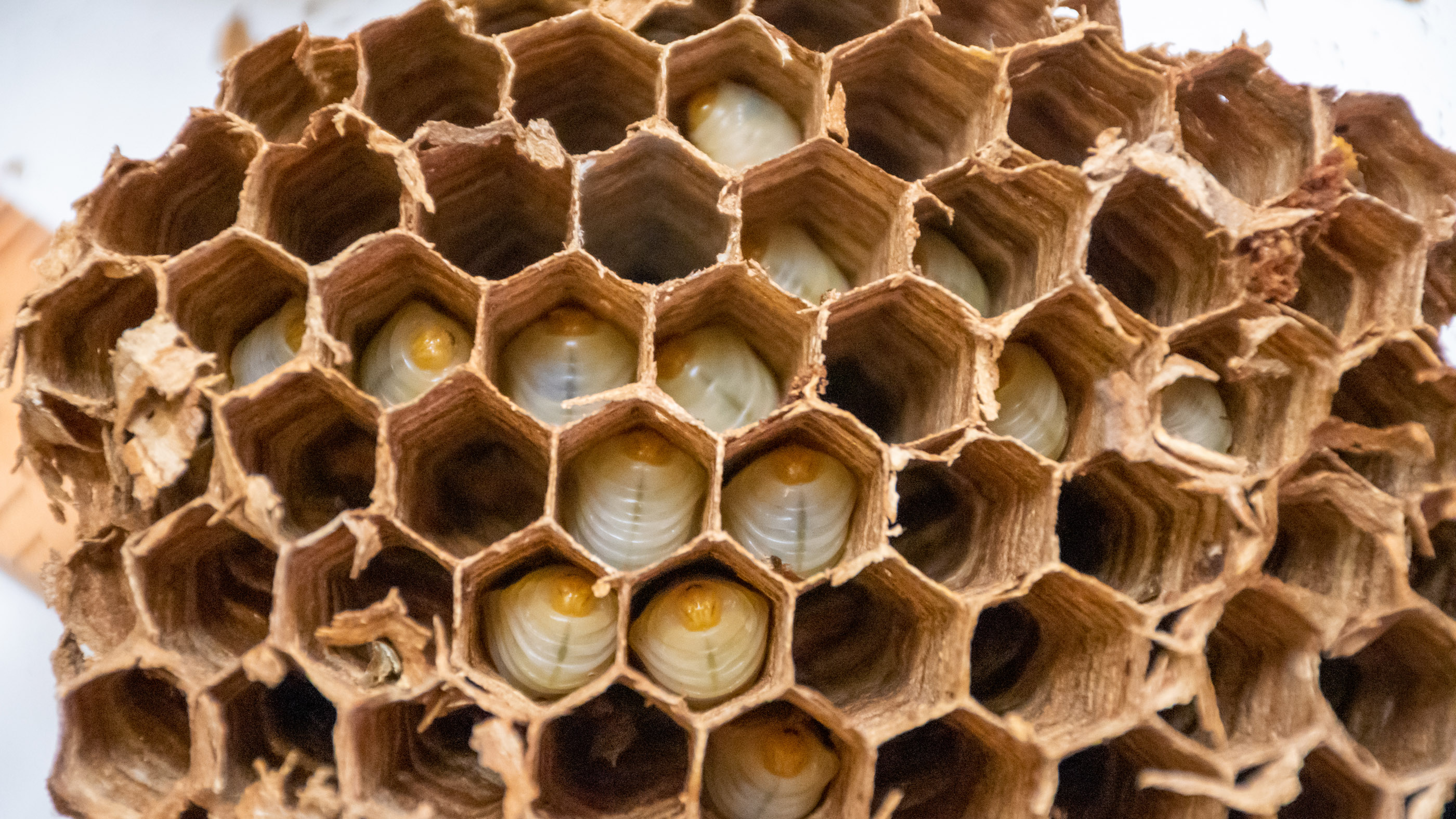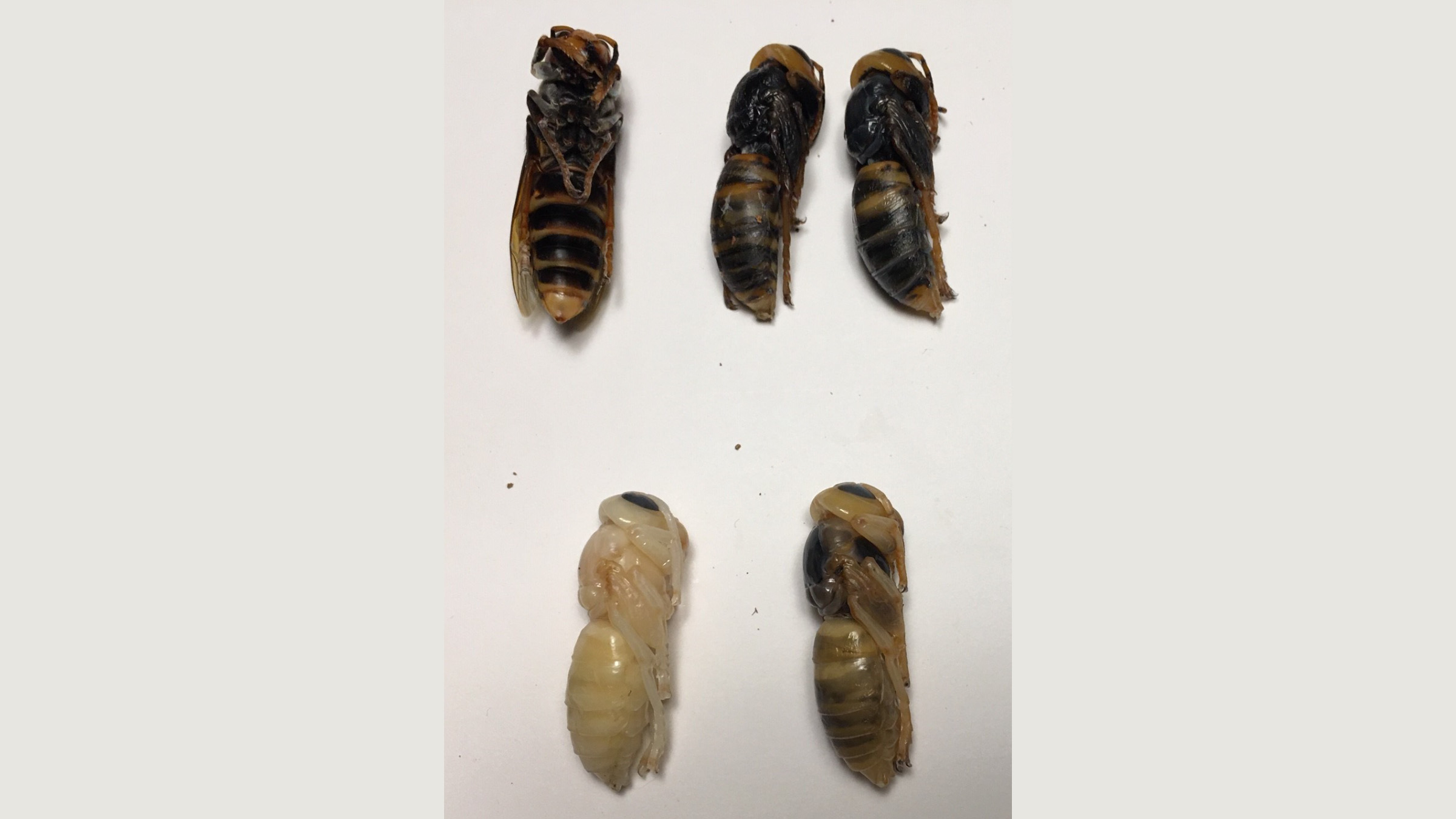200 'murder hornet' queens found inside first US nest of this invasive insect
They were poised to start their own colonies.

Entomologists in Washington state may have destroyed a "murder hornet" nest in the nick of time, preventing as many as 200 new queens from establishing new nests.
The nest, the first ever discovered in the United States, was destroyed on Oct. 24. State Department of Agriculture employees vacuumed the invasive hornets from the nest and found only worker hornets. Five days later, though, after they'd removed the nest from its tree and cracked it open, they found 76 live queens and 108 more still developing in their tiny cell capsules.
"It's possible that some [queens] had emerged before we did the vacuum extraction and eradication on the 24th, but it's not entirely likely, it looks like we got there in time," state managing entomologist Sven-Erik Spichiger told reporters during a virtual press conference.
Related: Photos: Murder hornets will haunt your nightmares
Invasion of the murder hornets
Murder hornets, more acurrately known as Asian giant hornets (Vespa mandarinia), are native to East and Southeast Asia. They grow to an intimidating 3 inches (7.6 centimeters) long and pack a nasty sting. Their greatest danger, though, is not to humans. The hornets prey on native wasps, disrupting the ecosystem, and also attack and rip the heads off the honeybees crucial to agriculture. A hive of Asian giant hornets can destroy a hive of honeybees in mere hours.
"It's just one more thing that the managed honeybees don't need to deal with," Spichiger said. Managed honeybees are already threatened due to pathogens, parasites and pesticides.
In September 2019, a hive of Asian giant hornets was destroyed near Vancouver, British Columbia. Later that year, reports emerged of Asian giant hornets near Blaine, Washington, and in December, a specimen was found that was confirmed to be one of the invasive insects.
Sign up for the Live Science daily newsletter now
Get the world’s most fascinating discoveries delivered straight to your inbox.
Entomologists in Washington and British Columbia are now on a mission to eradicate Asian giant hornets in North America. On Oct. 20 of this year, Washington state agriculture department employees trapped a few of the hornets, affixed radio transmitters to them with dental floss, and tracked them back to their nest east of Blaine.


By the numbers
After vacuuming as many hornets as they could out of the nest and removing it from its perch 8.3 feet (2.5 meters) up, the entomologists took the nest to a cold lab to count the insects and measure the nest.
They found that the nest was 14 inches (35.5 cm) tall and about 9 inches (22.8 cm) in diameter, completely filling the void in the tree where it sat. Entomologists counted 776 individual cells in the nest, which made it relatively small for a Asian giant hornet nest; in their native range, the insects build nests of up to 4,000 individual cells, Spichiger said.
Related: Googly eyes: Photos of striking wasp faces
In all, entomologists retrieved 112 non-mating female worker hornets from the nest and nine males. There were six unhatched eggs and 190 hornets in their larval stage, most dead by the time they were counted. Of the 76 live queens found in the nest, 75 would have been newly hatched in the time between when the nest was first disrupted and when it was opened in the lab, Spichiger said, and one would be the hive's active queen. Another 108 probable queens were found still sealed inside their cells in their pupal stage.
In addition, three queens were found dead in a water bucket near the nest location in the days after the removal. Newly hatched queens stay near their nest for 10 days, being fed by workers, before mating and hibernating over the winter underground or in another warm, protected spot. In spring, the queens emerge to establish their own nests.
That means that this single small nest produced nearly 200 new queens that would have had the opportunity to establish their own colonies — though, Spichiger said, only a portion of those queens actually survive to do so.
It's possible that a few queens hatched and escaped before the nest eradication, Spichiger said, but their numbers would be few.
"Frankly we're encouraged because of the number of queens we were able to count and kill," he said.
The State Department of Agriculture will continue to bait traps for the hornets as long as the weather is warm enough for them to fly. Any workers caught will be tagged and tracked in an attempt to find their nest. Any queens found would be seeking a mate and not likely to return to a nest, so they will be killed instead of tracked.
Originally published on Live Science.

Stephanie Pappas is a contributing writer for Live Science, covering topics ranging from geoscience to archaeology to the human brain and behavior. She was previously a senior writer for Live Science but is now a freelancer based in Denver, Colorado, and regularly contributes to Scientific American and The Monitor, the monthly magazine of the American Psychological Association. Stephanie received a bachelor's degree in psychology from the University of South Carolina and a graduate certificate in science communication from the University of California, Santa Cruz.










